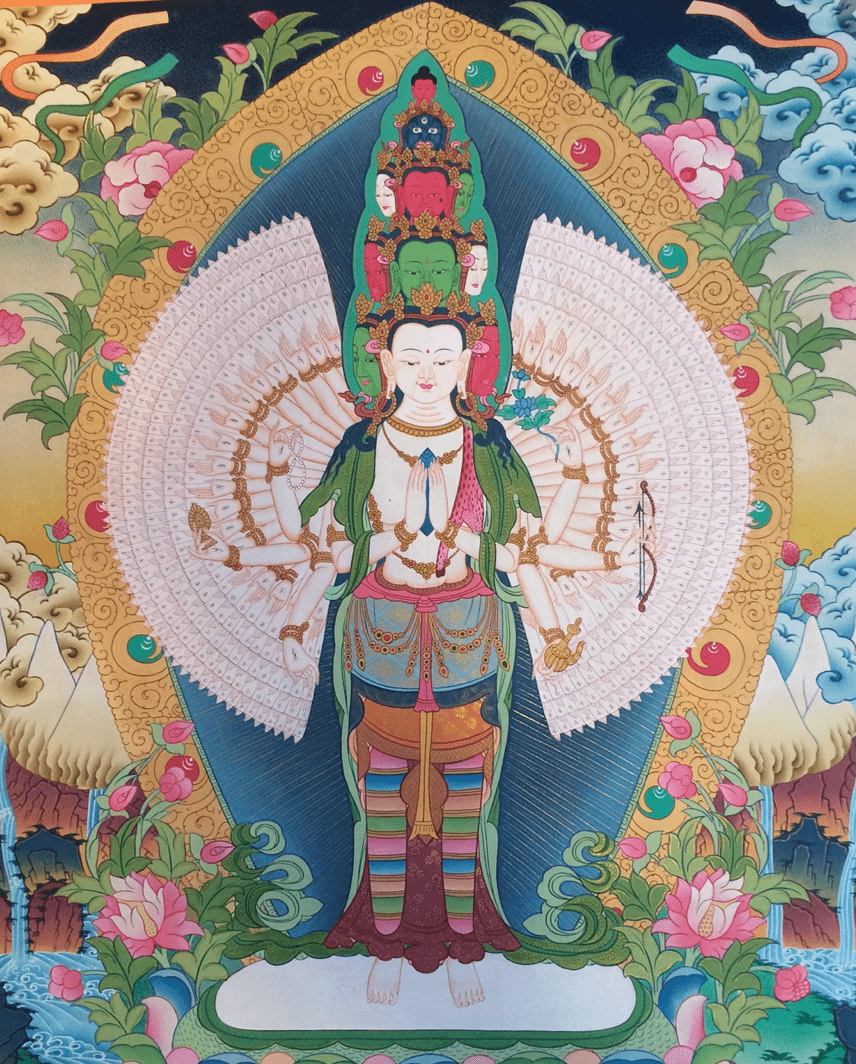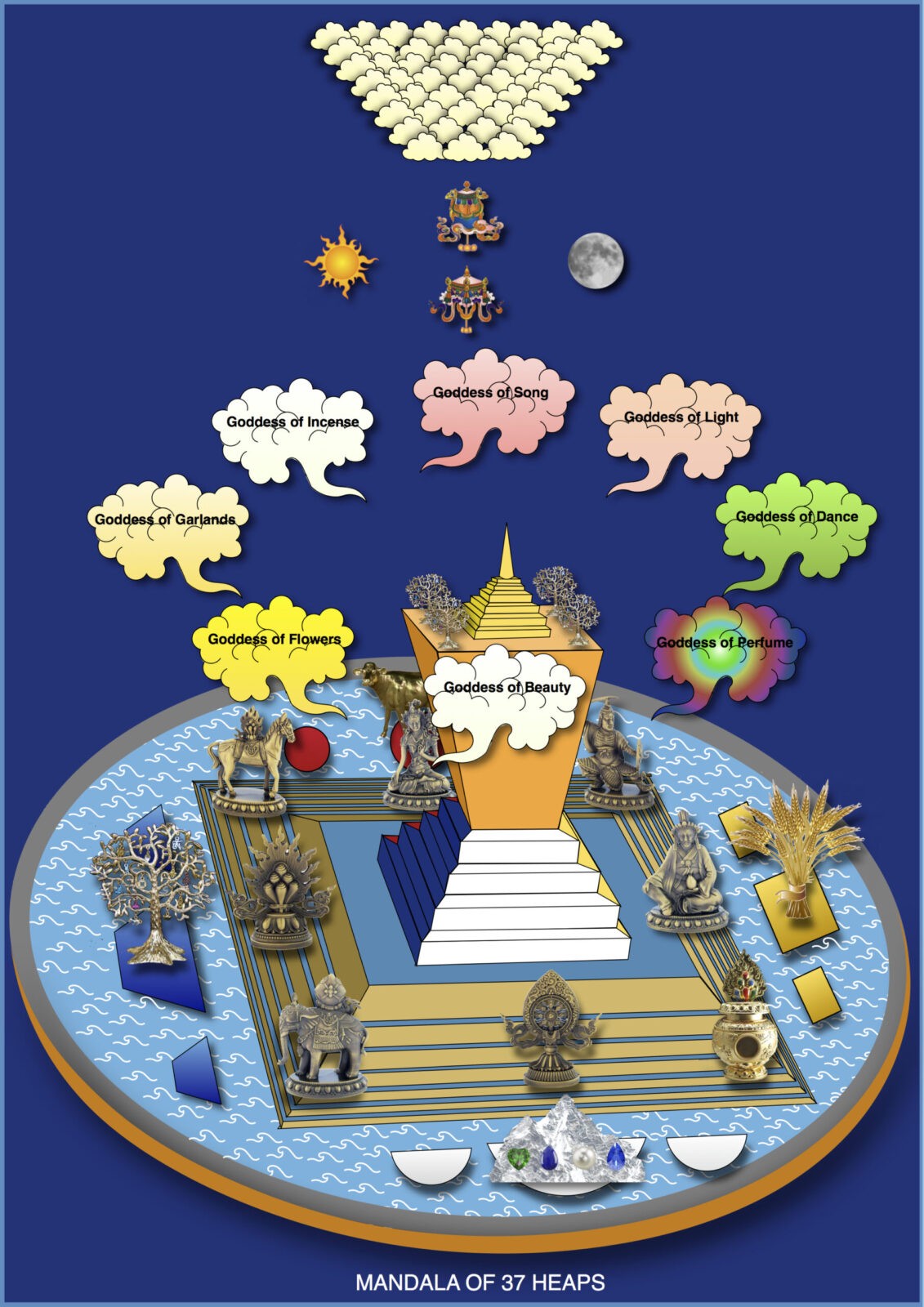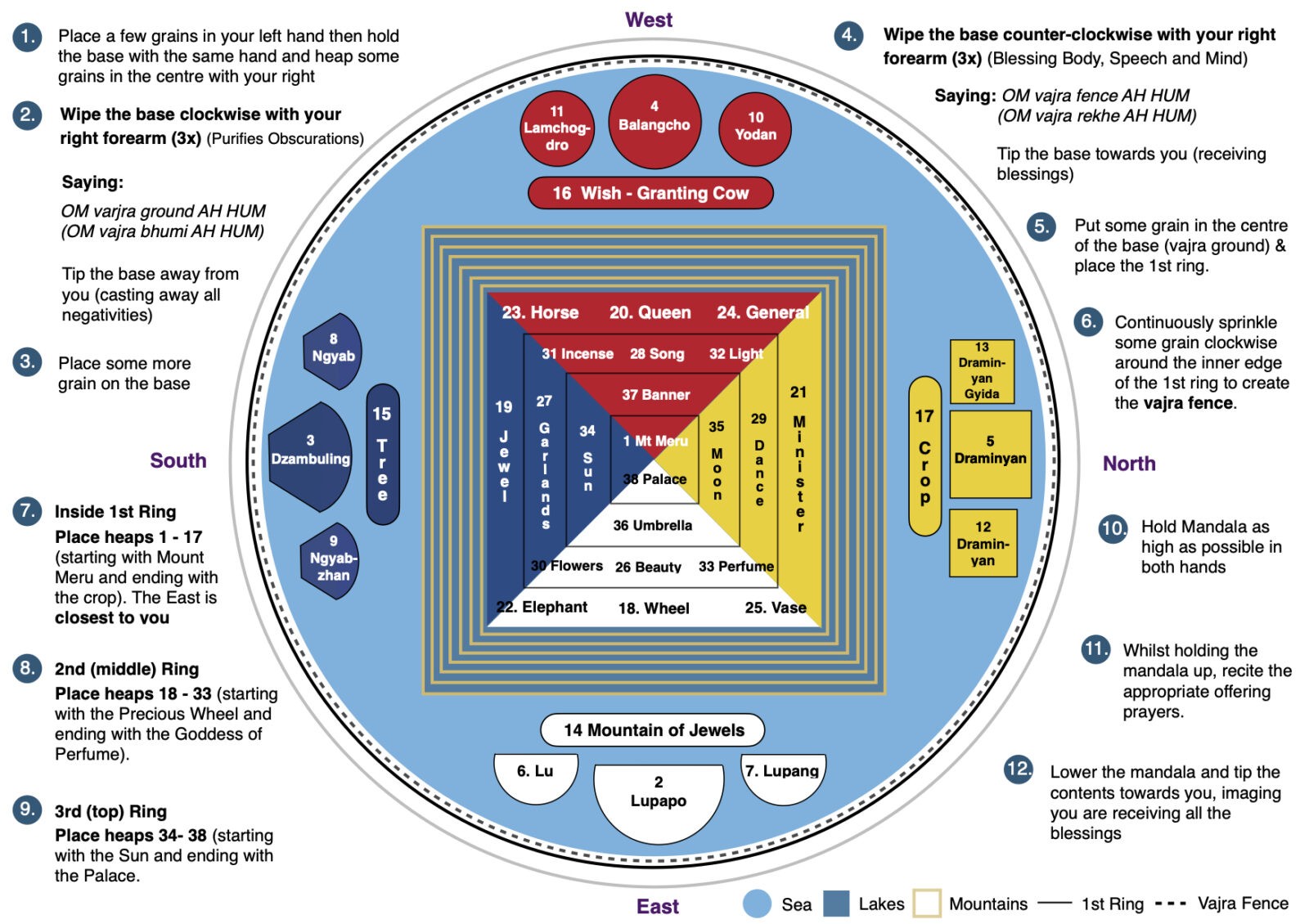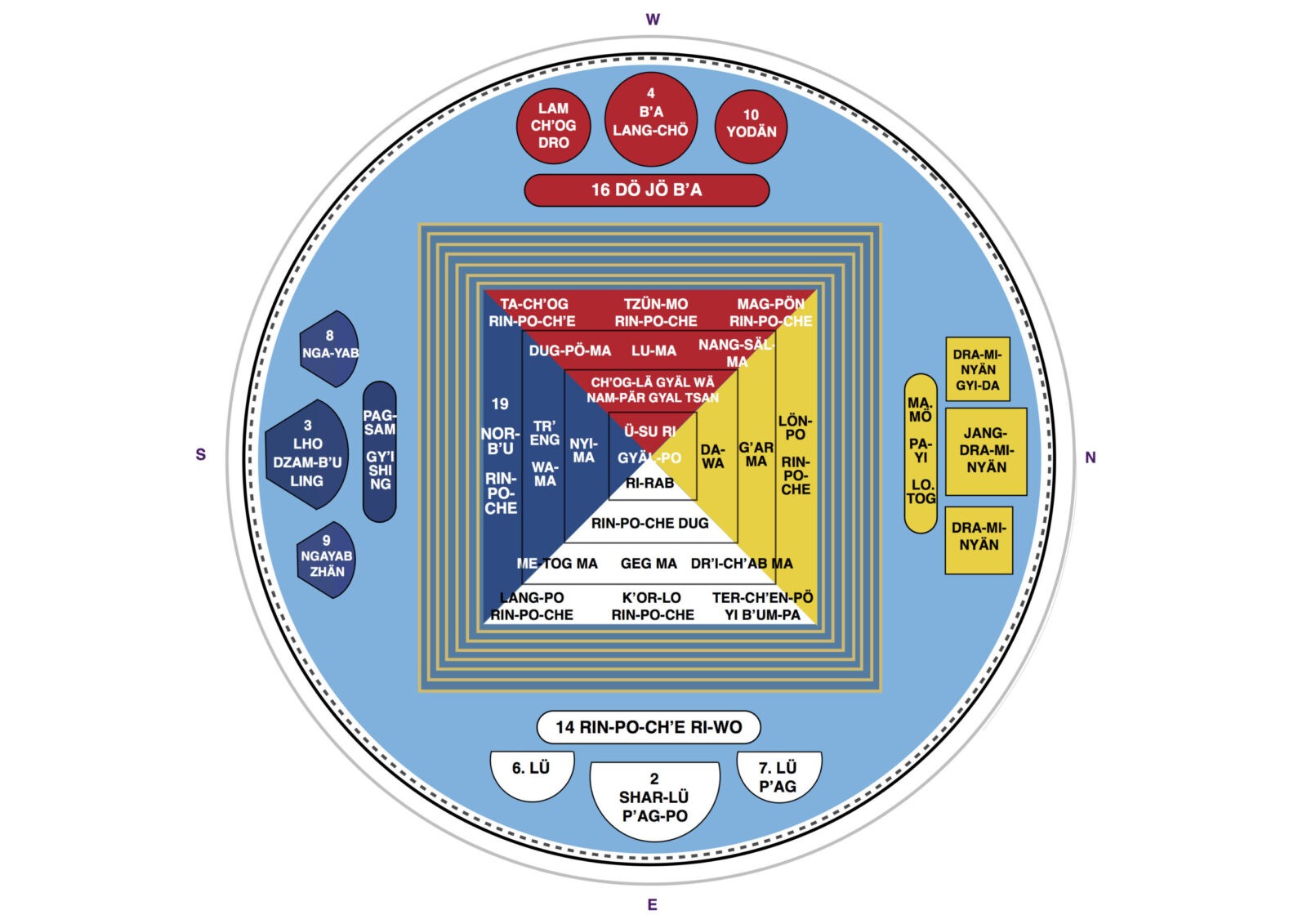Preliminary Practice Resources
The purpose of doing preliminary practices is for you to purify obstacles to achieving realizations of the path to enlightenment for the sake of all sentient beings—defilements, negative karmas and downfalls—and collect extensive merit. They are also done in preparation for longer tantric retreats. – Lama Zopa Rinpoche
Many of us have been advised by our teachers to complete a certain number of preliminary practices or are aiming to complete the traditional 100,000 of each preliminary. This can seem like a very tall order and difficult to complete, especially if we don’t have a conducive space to do them in.
General Introductions
Preliminary Practice Advice by Lama Zopa Rinpoche
Brief Instructions for the Preliminary Practices by Lama Zopa Rinpoche
Preliminary Practice Overview (Ngöndro) by Thubten Chödren
Advice Concerning Ngondro Preliminary Practices by Dr Alexander Berzin
Misunderstandings about Ngondro by Dr Alexander Berzin
What Is Needed before Ngondro or Preparatory Practices? by Dr Alexander Berzin
Refuge in the Three Jewels
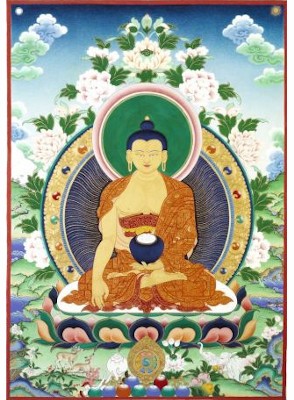
‘The entrance to the Buddhadharma is refuge, and the two causes for refuge are 1) fear of the sufferings of the lower realms and of all samsara, and 2) faith that the Triple Gem has the ability to guide us from those sufferings. Feeling this, you completely rely on Buddha, Dharma and Sangha. The entrance to the Mahayana is realizing bodhicitta.
Reciting the refuge formulas with bodhicitta is the action of a bodhisattva, creates much merit, and brings you closer to enlightenment.’ – Lama Zopa Rinpoche
The preliminary practice of taking refuge (including instructions on how to do the retreat) by Thubten Chödren
The Preliminary Practice of Refuge by Lama Zopa Rinpoche
Refuge in the Three Jewels by Lama Yeshe
Refuge Ngondro Retreat instructions by Thubten Chödren
Refuge Nyondro Advice by Thubten Chödren
Image of the Refuge Merit Field
Stages of the Path #52, Refuge ngondro Pt.1 (guru refuge) with Thubten Chödren, recorded by Sravasti Abbey
Stages of the Path #53: Refuge ngondro Pt.2 (ngondro refuge visualization) with Thubten Chödren, recorded by Sravasti Abbey
Stages of the Path #54: Refuge ngondro Pt.3 (ngondro visualization verse) with Thubten Chödren, recorded by Sravasti Abbey
Stages of the Path #55: Refuge ngondro Pt.4 (ngondro visualization three Jewels) with Thubten Chödren, recorded by Sravasti Abbey
Mandala Offerings
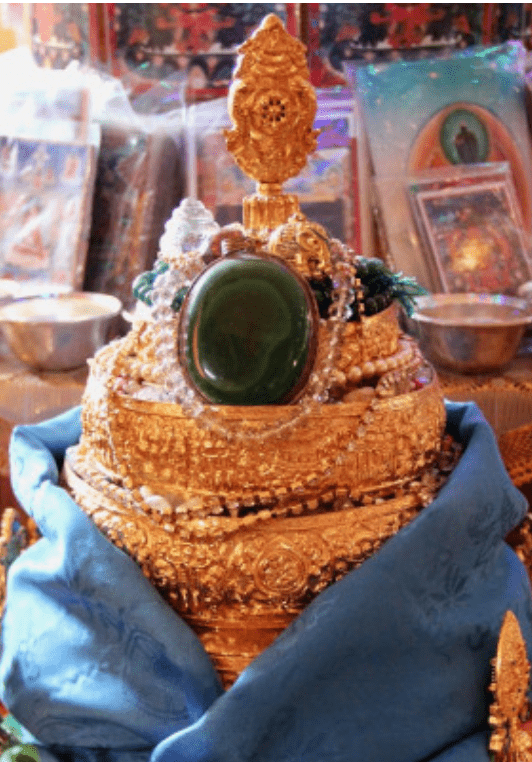
Mandala offering is a powerful method for accumulating extensive merit in a short time. The Tibetan word for mandala is kyil.kor: kyil is essence, kor is taking—taking the essence. The term means taking the essence on the base of offering a mandala, and what you get from this is merit—the cause. Therefore the essence you take is the generation of the whole path, from guru devotion up to enlightenment, as well as the result, the unification of the dharmakaya and rupakaya. The cause is merit, the path; and the result is enlightenment. In other words, from this practice inconceivable temporal and ultimate happiness results. One is making unbelievable business with the merit field! – Lama Zopa Rinpoche
Mandala Offering Instructions by Lama Yeshe
The Mandala Offering by Lama Zopa Rinpoche
How to Offer a Mandala by Lama Zopa Rinpoche
Compilation of Lama Zopa Rinpoche’s Mandala Offering Advice
Offering the Mandala: The placement of objects and the text to recite by Thubten Chödren
Mandala and the Far Reaching Attitudes (audio recording) by Thubten Chödren
When and Why the Mandala is Offered (audio recording) by Thubten Chödren
How to Make Mandala Offerings (audio recording) by Thubten Chödren
The Purpose of Mandala Offerings (audio recording) by Thubten Chödren
Mandala Prayer with Descriptions
Mandala Offering Commentary (1/3) by Lama Zopa Rinpoche filmed at Shakyamuni Buddha Centre in Taiwan, made available by FPMT.
Mandala Offering Commentary (2/3) by Lama Zopa Rinpoche filmed at Shakyamuni Buddha Centre in Taiwan, made available by FPMT.
Mandala Offering Commentary (3/3) by Lama Zopa Rinpoche filmed at Shakyamuni Buddha Centre in Taiwan, made available by FPMT.
How to Offer the Long Mandala with Thubten Chödren, recorded by Sravasti Abbey
Prostrations to the Thirty-Five Confession Buddhas
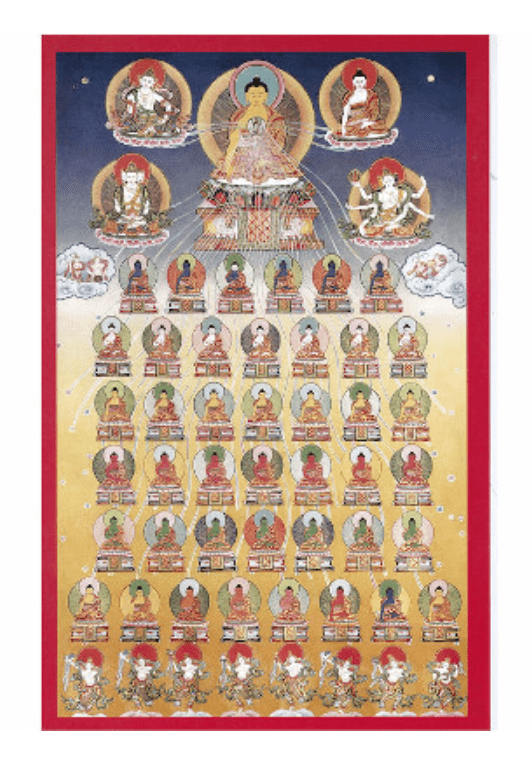
‘When making prostrations by reciting the names of the Thirty-five Buddhas, even only one prostration to all the Buddhas, Dharma, and Sangha becomes a cause for achieving enlightenment. Prostrations to statues, scriptures, and stupas create many causes for liberation from samsara and achieving success in this life. But prostrations to the Thirty-five Buddhas become a cause for enlightenment, which is a big difference.
In the past, when the Thirty-five Buddhas were bodhisattvas, they made many prayers to be able to benefit sentient beings, to easily purify our defilements and negative karma. When they achieved enlightenment, they achieved the Buddha’s ten qualities or powers, one of which is the power of prayer. So, their names have the power of all those past prayers. That is why, when sentient beings recite their names, they have so much power to purify defilements and eons of negative karma. Every single quality the Thirty-five Buddhas attained was in order to benefit sentient beings, there was no other reason or motivation for it, so we should use this advantage.’ – Lama Zopa Rinpoche
The Practice for Prostrations to the 35 Confession Buddhas
The Preliminary Practice of Prostrations
Thirty-five Buddhas Confession and Purification Practice Advice by Lama Zopa Rinpoche
Motivation for Thirty-five Buddhas Practice by Lama Zopa Rinpoche (audio & unedited transcript)
How to Collect More Merit With Prostrations by Lama Zopa Rinpoche (audio & unedited transcript)
Dedicating the Merit of Prostrations by Lama Zopa Rinpoche (audio & unedited transcipt)
The Benefits of Making Prostrations by Lama Zopa Rinpoche
Instruction videos on Prostrations by Thubten Chödren
MP3 Download of the practice
35 Confession Buddhas Image
How to Make Prostrations: Instructions with Thubten Chödren, recorded by Sravasti Abbey
How to Make Prostrations: Demonstration with Thubten Chödren, recorded by Sravasti Abbey
35 Buddhas Prostration guide with Ven Lozang Yönten
35 Buddhas short version (1x each group reciting) with Ven Lozang Yönten
35 Buddhas Prostration guide with Lama Zopa Rinpoche’s advice, commentary and mantra update with Ven Lozang Yönten
Vajrasattva Practice
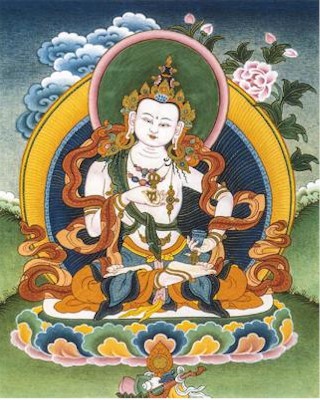
“The practice of purification is one of the most important solutions to life’s problems.” – Lama Zopa Rinpoche.
‘Common to all four traditions of Tibetan Buddhism, the practice of Vajrasattva is used to purify obstacles to spiritual development, negative karma and illness. Lama Yeshe, the inspirational teacher who strongly influenced the development of Buddhism in the West, found that the practice of Vajrasattva brought dramatic results for his Western students.’ [Foundation for the Preservation of the Mahayana Tradition]
The Preliminary Practice of Vajrasattva by FPMT
Vajrasattva Retreat Sadhana by FPMT
Benefits of Vajrasattva Practice by Lama Zopa Rinpoche
Becoming Vajrasattva: The Tantric Path of Purification by Lama Yeshe (commentary)
Vajrasattva Meditation: An Illustrated Guide by Khenpo Yeshe Phuntsok
Teachings from the Vajrasattva Retreat by Lama Zopa Rinpoche (commentary)
Heruka Vajrasattva Tsog Offering by Lama Yeshe
Image of Vajrasattva
Burning Offering to Dorje Khadro
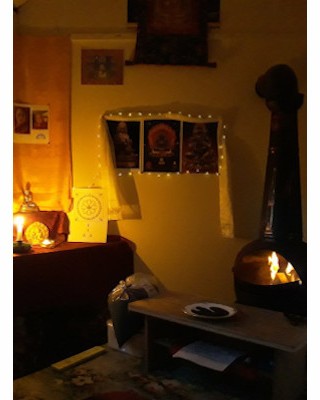
‘Making burning offerings to Dorje Khadro (Vajradaka) is considered to be “a golden Dharma” passed directly from Manjushri to Lama Tsongkhapa. It was one of Lama Tsongkhapa’s heart practices and, as such, has a special connection with the Gelug lineage of Tibetan Buddhism.
The practice of Dorje Khadro comes highly praised for its power to purify negative karma in general, but especially for its ability to purify obstacles caused by broken vows and samaya related to highest yoga tantra. It also assists us in assembling the most conducive conditions for success in long retreats.
This practice is encouraged as a powerful way to help those who are sick or dying and as a method to readily clear the mind of challenging disturbing emotions.’ [Foundation for the Preservation of the Mahayana Tradition]
Commentary on the Burning Offering to Dorje Khadro: The Preliminaries by Lama Zopa Rinpoche
Commentary on Burning Offering to Dorje Khadro: The Actual Meditation by Lama Zopa Rinpoche
Commentary on Burning Offering to Dorje Khadro: Conclusion by Lama Zopa Rinpoche
The Preliminary Practice of Dorje Khadro by Lama Zopa Rinpoche
Burning Offering to Dorje Khadro translated by Lama Zopa Rinpoche
Water Bowl Offerings

“Tibetans make water bowl offerings to holy objects because it doesn’t cost anything and it doesn’t cause pride to arise. If an offering costs a lot of money, pride can develop rather than rejoicing. In this way, offering water can become a pure offering and you collect a lot of merit. Water is wet, so offering it helps the mind become soft, rather than selfish and hard like a rock. With a soft mind one can develop loving kindness, bodhichitta, and the ultimate good heart.
Offering water bowls creates far more merit than simply seeing a holy object. Instead of thinking that the offering bowls contain water, which is how it appears to the human mind, you can create even greater merit by thinking that the offering bowls contain the purest nectar, which is how the offering appears to a buddha.” – Lama Zopa Rinpoche
The Preliminary Practice of Altar Set-up & Water Bowl Offerings
How to Offer Water Bowls by Lama Zopa Rinpoche
Further Advice on How to Offer Water Bowls by Lama Zopa Rinpoche
Lama Tsongkhapa Guru Yoga
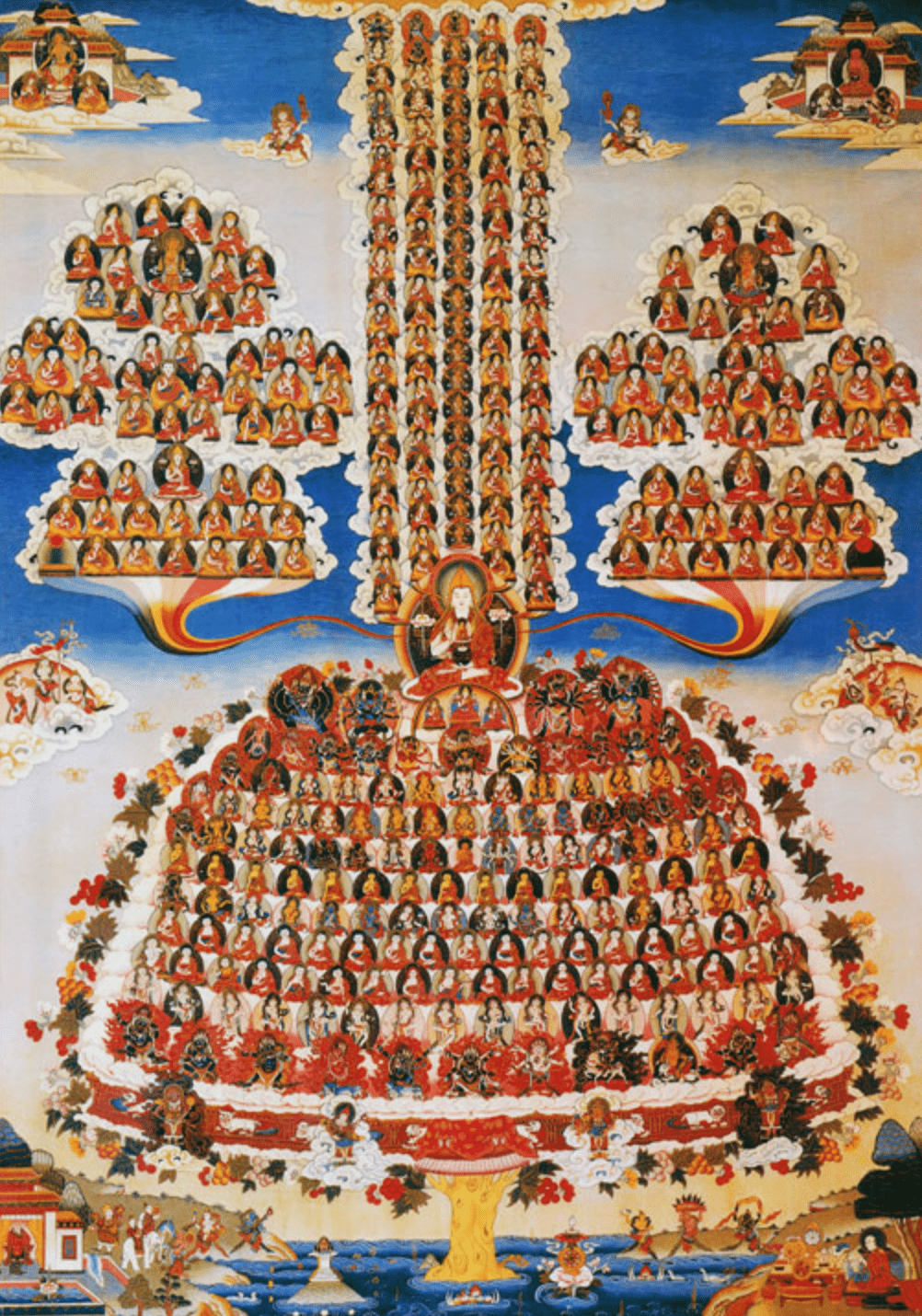
“Attempting the guru yoga practice of the inseparability of your own root guru and Lama Tsongkhapa establishes the root of all happiness from this life up to enlightenment. Attempting this guru yoga practice is that which causes all the teachings that you listen to and reflect on and meditate on to go to the right point. Go to the right point means to be of benefit. Every single teaching taught by Buddha — sutra and tantra — is only for the purpose of subduing your own mind.
That is the only purpose. So, whatever you do — listening, reflecting, meditating, everything — is for subduing your own mind. This guru yoga practice does that. Its purpose is to direct your mind so that listening is not outer listening, reflection is not outer reflection, meditation is not outer meditation — rather that they are inner practices and thus subdue your mind.” – Lama Zopa Rinpoche
Lama Tsongkhapa Guru Yoga practice text following Lama Zopa Rinpoche’s instructions
A Commentary on Lama Tsongkhapa Guru Yoga practice by Lama Zopa Rinpoche.
Lama Tsongkhapa image
Lama Tsongkhapa Guru Yoga Retreat with Ven Lozang Yönten, hosted by Shantideva FPMT-Israel
35 Buddhas Prostration guide with Lama Zopa Rinpoche’s advice, commentary and mantra update with Ven Lozang Yönten
Making Tsa-Tsas
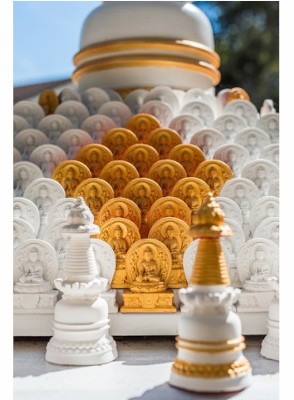
The presence of holy objects in the world transforms the minds of sentient beings and helps them realize the path to enlightenment. In addition, the preliminary practice of making tsa-tsas purifies obstacles and creates positive conditions for this and future lives. This practice contains all the instructions needed for creating tsa-tsas, including the actual practice and practical advice.
“Even in this life, you will have less disease, your enjoyments will increase, and you will achieve long life and good reputation. It is the best method to betray death. Making tsa-tsas pacifies obstacles, bad conditions, accidents, and sudden diseases like heart attacks and paralysis. By making tsa-tsas you pacify enemies, interferers, and harms. You accumulate all merit, purify all obscurations, and in a future life, achieve the resultant three kayas.“ – Lama Zopa Rinpoche
The Preliminary Practice of Tsa Tsas compiled and translated by Lama Zopa Rinpoche
Commentary on Tsa Tsa Practice by Lama Zopa Rinpoche
What to do with Tsa Tsas by Lama Zopa Rinpoche
Nyung Nä
